Bmw I3 Top Speed
Last updated on September 15th, 2021 at 08:53 am
1. Intro, Price, Options and Verdict
Pros
- Great driving experience
- Still looks futuristic
- Reasonable space for four adults
Cons
- Mediocre range
- Expensive – and then you add options
- Only 50kW DC charging
Verdict
The BMW i3 may be an eight-year-old design, but it was so ahead of its time originally that it just about remains relevant in 2021. The range is considerably behind cars costing the same from the likes of Kia and Hyundai, and once you add options the price can be astronomical. But the driving experience is still one of the best around, making the i3s particularly worth considering – if you can afford it.
Range (WLTP): 173-190 miles Top Speed: 93-99 mph 0 to 62: 6.9-7.3 sec Cost/Mile (@14p/kWh): 3.1-3.4p
Introduction
BMW used to be a leading manufacturer of EVs, and the i3 was its flagship mainstream choice, with over 200,000 now sold worldwide. It has been on the market since 2013, and like the Nissan Leaf has grown and developed in abilities over its lifespan. There used to be a range extender version that had a small petrol engine to provide more miles than the battery alone could deliver, but battery capacity has increased enough that BMW has discontinued that version. The latest car has 120Ah, which equates to 42.2kW, almost twice the capacity of the original car.
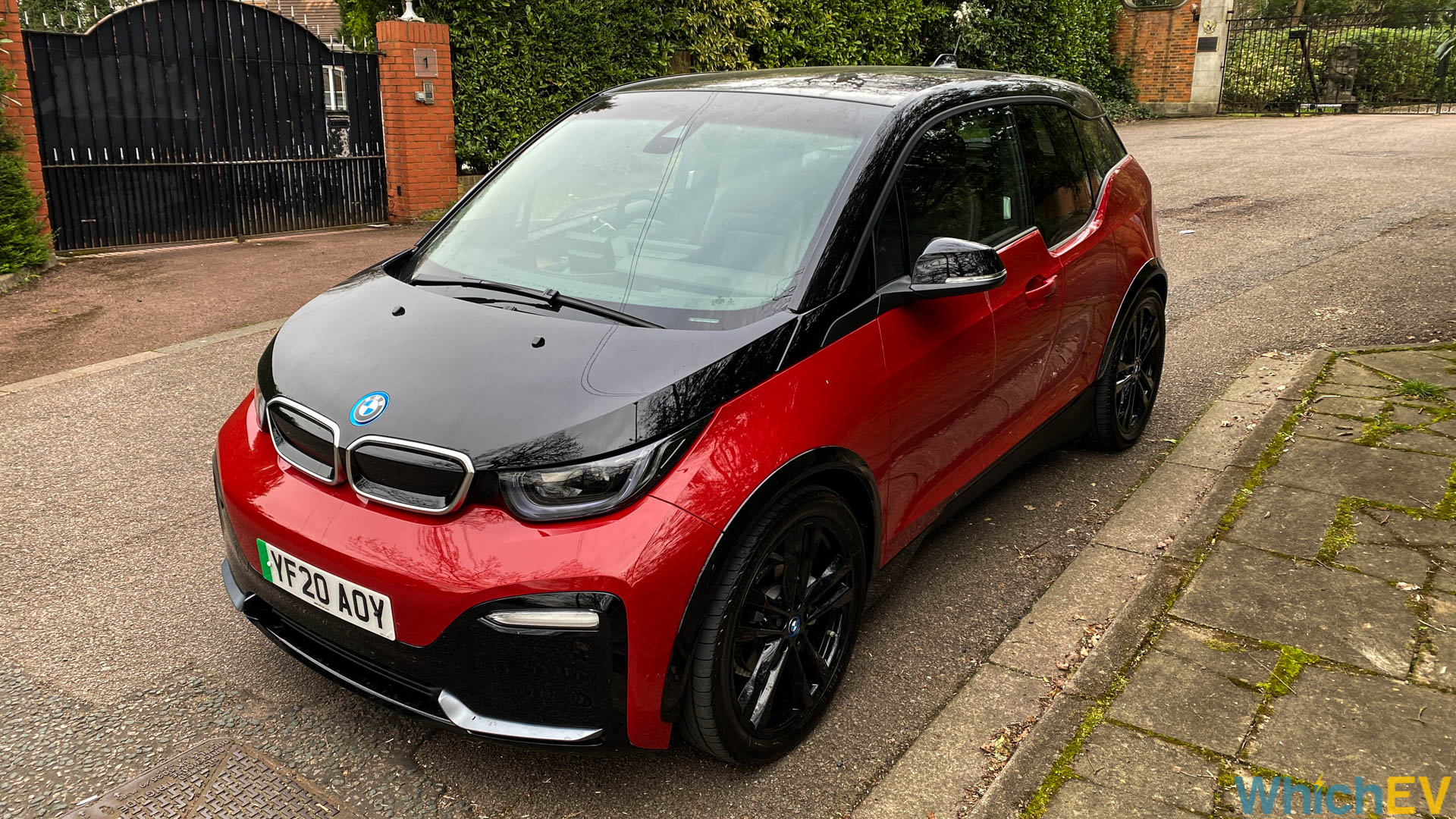
BMW has also slotted a higher performance i3s above the basic i3. Where the latter has 170hp, the s version boasts 184hp. Both are quick, but the s keeps the i3 ahead of most EVs in this price range, as you would hope from a BMW. The i3 was starting to look expensive, with a price pushing towards a Tesla Model 3. But the removal of the UK government plug-in car grant (PICG) for vehicles above £35,000 has prompted BMW to drop its prices so both the i3 and i3s can still receive the reduced £2,500 grant. We already wanted to see if the i3 still stood up against more recent EV releases, but this gave us even more interest in putting this classic EV through its paces.
Price and Options
BMW gave us a relatively loaded i3s to try out, which would have been a hefty £43,660 after the loss of the PICG. However, now BMW has dropped its prices by £2,295, this car gets the grant again reducing the overall price of our fleet sample to £38,865, which is still expensive but £4,795 cheaper. The base i3 is now £33,805 before the grant (so £31,305 after it is applied), and the i3s £34,805, or £32,305 with the grant. This makes it a lot more competitive, but the price of our fleet car reveals a typical story with German cars: the cost really racks up once you add options, and there are lots of options.
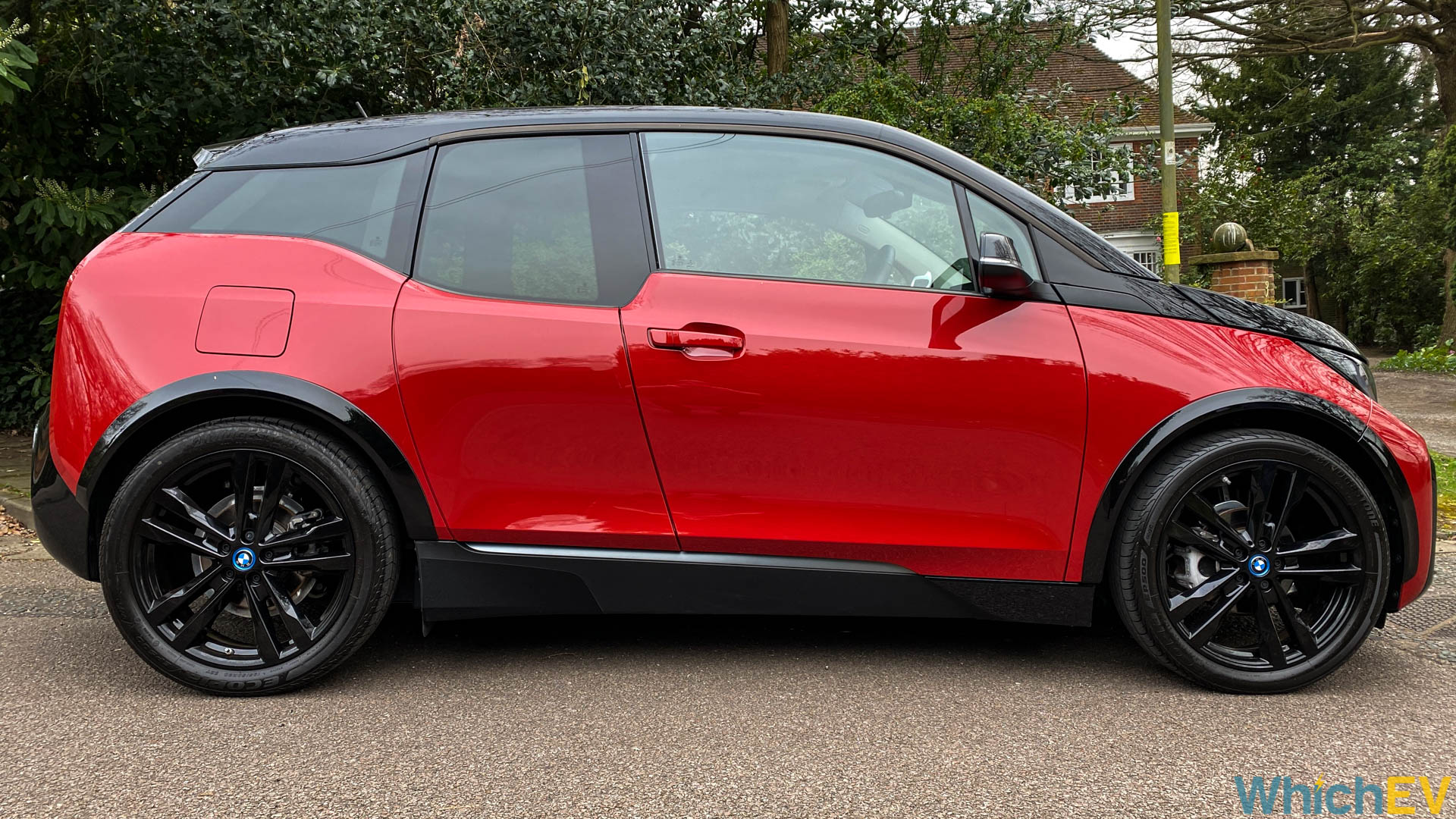
It is worth noting that options do not count for the PICG, so however much you add, if the basic list price is below £35,000, you still get the grant. Paint options like the "Melbourne Red" of our car add £550. The basic i3 has skinny 19in wheels, but the s switches these to 20in. Then there is the £1,100 i3s Plus package that our car came with, which provides a different set of 20in alloys, better Harmon Kardon speakers, online entertainment, and sun protection glass. You can get this pack for the basic i3 too, but it costs £1,400 more with that car.
The i3s already has lowered sports suspension, with wider wheels and tyres. But the wheels are still narrow compared to most cars. The basic car uses 19in 155s, while the S's 20in tyres are 175s front and 195s on the rear. Most normal car tyres are over 200mm wide.
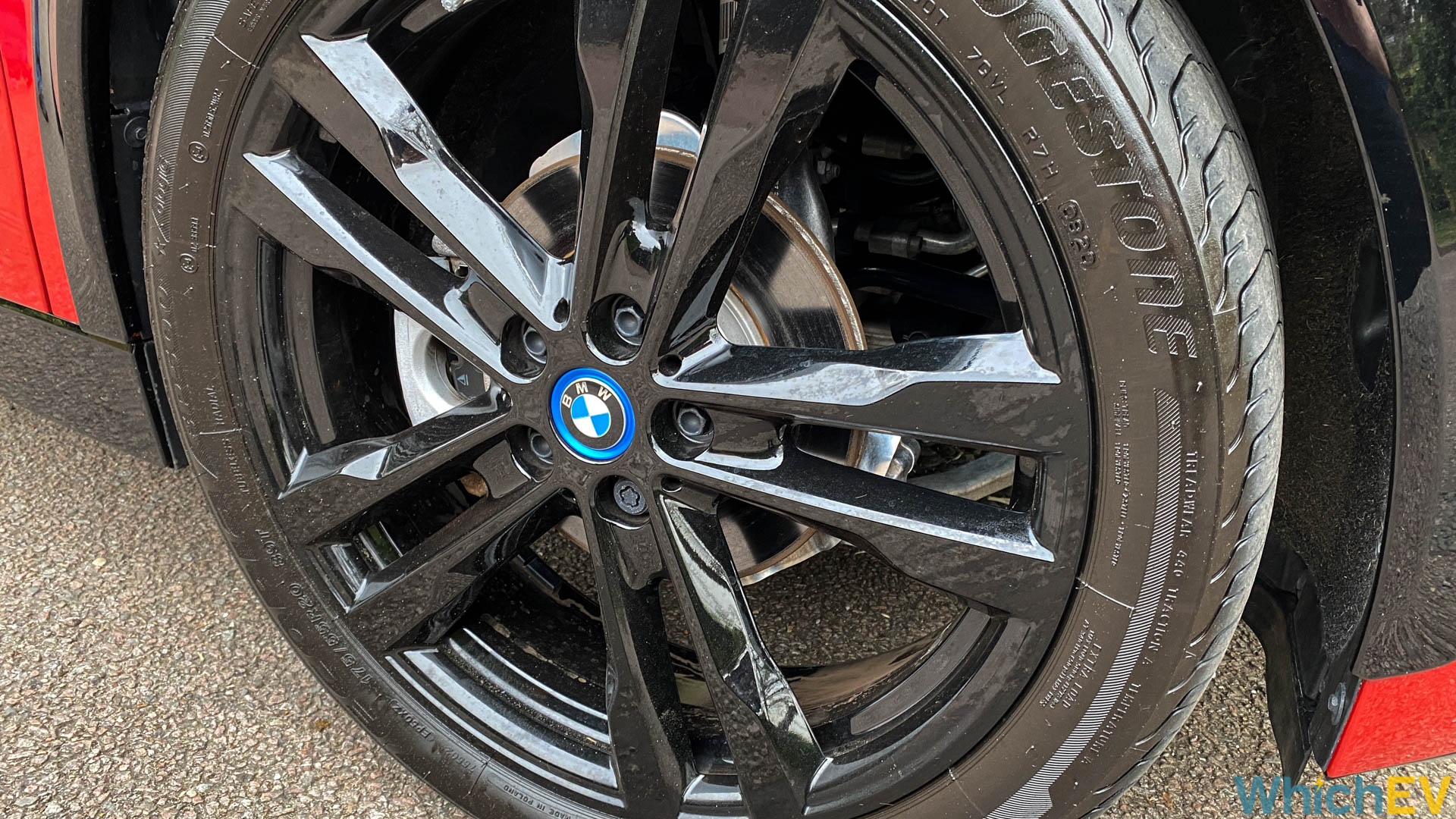
Other options include parking assistance for £790, enhanced Bluetooth with wireless charging for £395, and interior trim bundles costing up to £2,000. Even the reversing camera is a £360 optional extra. Keyless entry is another £330 option. You can also specify individual pieces of some of the bundles such as wood panelling, online entertainment, or sun protection glass. The list is extensive and can really push the cost well above the base price.
Exterior Design
The BMW i3 was a revelation when it launched. It still looked like a BMW, but in a very futuristic way. The low resistance skinny tyres were an audacious move. BMW really managed to make an EV look desirable rather than just worthy, long before Tesla achieved the same feat on steroids. When we have driven the i3 in the past, it felt a little like the future as imagined a decade ago, which is what it is.
But now we have spent some more time with the i3s, with its bigger, slightly fatter wheels, two-tone paint, black wheel arches and black alloys, we have to say that this car looks more classic than dated. It is a massive relieve that the i3 hasn't received the awful new kidney grille of the latest BMWs, which we can't help thinking looks like beaver teeth sticking out the front.
The i3, and particularly the i3s, looks like a small, stylish BMW – which is what it is. The invisible rear doors give it the appearance of a coupe, when in fact it is a four-door car. Both the Renault Zoe and the Honda e take a similar approach, but BMW has taken the idea to its extreme because the rear doors are "suicide" style, so the hinge is at the rear. You also can't open them without first opening the respective front door, because the handle is in the B-pillar. The integrated window doesn't open, either, which will be a problem for rear seat ventilation. But, on the plus side, this does afford easier access to the rear seats.
Interior Comfort
BMW i3 interior options are another way you can rack up the price. The names of the packages revolve around posh words for types of dwelling. The basic one, Atelier, is the French word for the private workshop of an artist (pretentious, moi?) and then there's Loft for £1,000, Lodge for £1,500, and Suite for £2,000, which was the interior in our car. The bundles also include posher interior trim and floor mats, with Suite using Dark Oak for dashboard surfaces.
The Suite seats are allegedly Leather Vernasca Dark Truffle, which we hope doesn't mean they are made out of mushrooms. They are quite hard but very clearly sports seats, blending this with body-hugging comfort that holds you in place on tight corners very adeptly. The i3 is quite a tall car, so there is plenty of headroom in the front. All trim levels provide standard front heated seats, but one thing you don't get is electronic adjustment. The specs imply that the Loft seats are electronic, but even so it is extremely strange to have a £2,000 interior option without electronically adjusted seats.
You get a couple of cupholders in the central console, one of them underneath the central arm rest. The slot for your phone adds wireless charging if you paid for that £395 option. But we found the cradle wasn't big enough for an Apple iPhone 12 Max Pro, a drawback we have seen on one or two cars from other manufacturers as well – they clearly didn't predict phones that big when they designed their wireless chargers. You get a couple of USB ports in the central console, one of which is USB C, and a standard 12V connector. This is quite far back if you want to use it to power something you attach to the windscreen, however. There is also a reasonably sized glove compartment, which opens upwards rather than downwards.
As we already mentioned, the rear doors are "suicide" ones that open backwards and integrate the B-pillar, which means there is easier access to the rear seats. Like the Honda e, the BMW i3 only has two rear seats and the middle section is permanently taken up by a couple of cupholders. The rear seats are therefore a bit wider than some and nicely contoured, making them quite comfortable for adults. They have plenty of headroom, but the knee room leaves something to be desired. You will have trouble sitting in the back if you are over six foot, particularly if the person sitting in front is too.
Another thing missing for rear passengers is any specific air vents for the climate control, which is a particular problem as you cannot open the rear windows. There are no USB ports in the rear either, although the front ones are so far back you might be able to reach them from the rear. The rear seats both have ISOfix points for child car seats, and here the suicide doors will make getting a kid in and out of their seat quite easy. There are no ISOfix points on the front passenger seat, however.
Storage and Load Carrying
One area where the i3 disappoints a little is in boot space. The boot floor is quite high, due to the electric motor being between the rear wheels, and there is no extra compartment as a result. The boot is bigger than the Honda e's, with 260 litres. But that is still way behind crossover hatchbacks like the Hyundai Kona Electric. It's enough for a weekly shop for a small family, but hot holiday baggage for four occupants.
The boot does increase respectably if you put the rear seats down, though. Since there are only two of these, the split is 50:50 not 60:40. But BMW supplies some loops in the rear to make dropping the seats down easy from the rear, without you having to go round to the side doors. This creates a flat boot with a much more generous 1,100 litres, which isn't far behind a Nissan Leaf.
There's also a small frunk with 12.5 litres of capacity containing a toolkit, although it's not watertight unless you add a sealed liner. This is available as a third-party accessory.
The i3's drive control system is extremely reminiscent of that used by the VW ID.3 and ID.4. Or, more likely, VW copied it off BMW. There is a rotating knob on the top-right of the steering wheel. You rotate upwards once for drive, once more for B-mode with extra regenerative braking, and down for neutral and then reverse. There is a P button for park, and the start-stop button can be found here too – something VW has done away with for its ID. cars.
A separate electronic parking brake button can be found in the centre console, which is another thing VW has dispensed with. A rocker switch in the central console lets you select either the two Eco modes, a Normal mode or Sport mode, which is the extra one you get with the i3s.
The steering wheel is standard BMW kit, with cruise control functions on the left and volume, voice, and phone functions on the right. There are stalks for lights and indicators on the left and windscreen wipers on the right.
The dashboard display is small and minimal in functions, with a digital display of speed, remaining range, and not a lot more. This is another area where VW appears to be emulating BMW, foregrounding simplicity. The air conditioning has its own complete set of control buttons, but this isn't dual-zoned climate control, which is a surprise in a car this expensive.
The first i3 cars came with a 6.6in central display, which would have been very antiquated now that so many cars are coming with huge LCD panels. Fortunately, BMW has now made the 10.2in panel that was originally an upgrade standard with the Loft trim upwards. It's not a touch screen and is actually so far back on the dashboard it's hard to reach without stretching forward anyway, which would be dangerous when driving. Instead, there's a control knob in the central console that you can rotate or jog to navigate through menus.
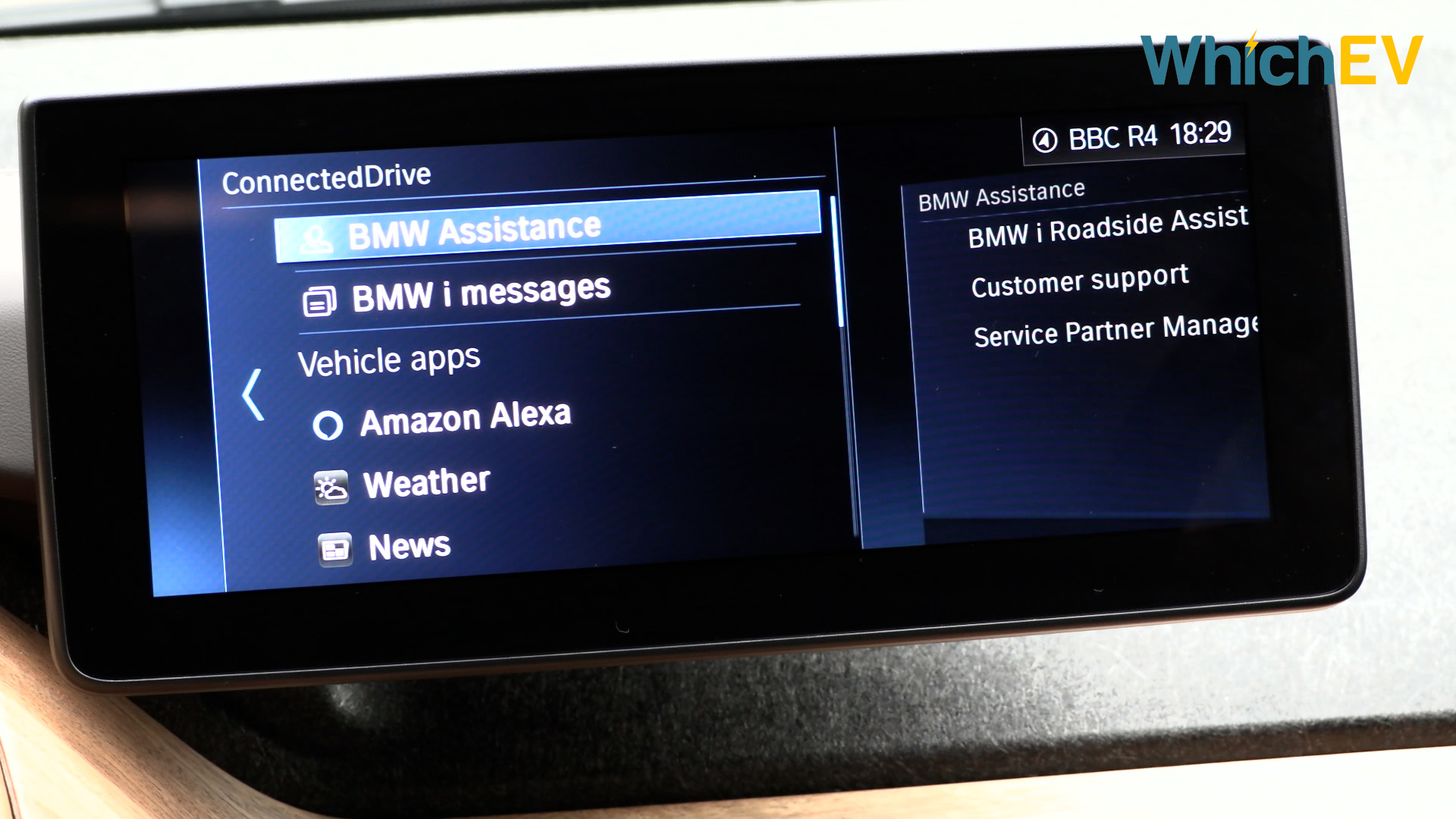
Despite the lack of a touchscreen, the menu functions and satnav are reasonably easy to operate. The satnav comes with real-time traffic, which is part of BMW Connected Drive. This also includes capabilities like Amazon Echo integration, concierge services, a subscription to the Digital Charging Service and other online abilities. You can hook up an iPhone via Apple CarPlay, but Android Auto does not appear to be supported, which is a sign that this media control system is a little behind the times. A DAB radio is included as standard, but the Online Entertainment package adds some online media streaming abilities. This is included with the Plus pack but is otherwise a £160 extra.
Performance and Driving
Any self-respecting BMW must deliver a good driving experience to warrant the brand. The good news is that the i3 really does. With rear-wheel drive and balanced weight distribution, it handles extremely well, and all versions are quite fast. The basic i3 takes 7.3 seconds to reach 62mph, and the i3s drops this to 6.9 seconds, which is GTI-quick by petrol standards, and quicker than pretty much all EVs in the sub-£40,000 price bracket.
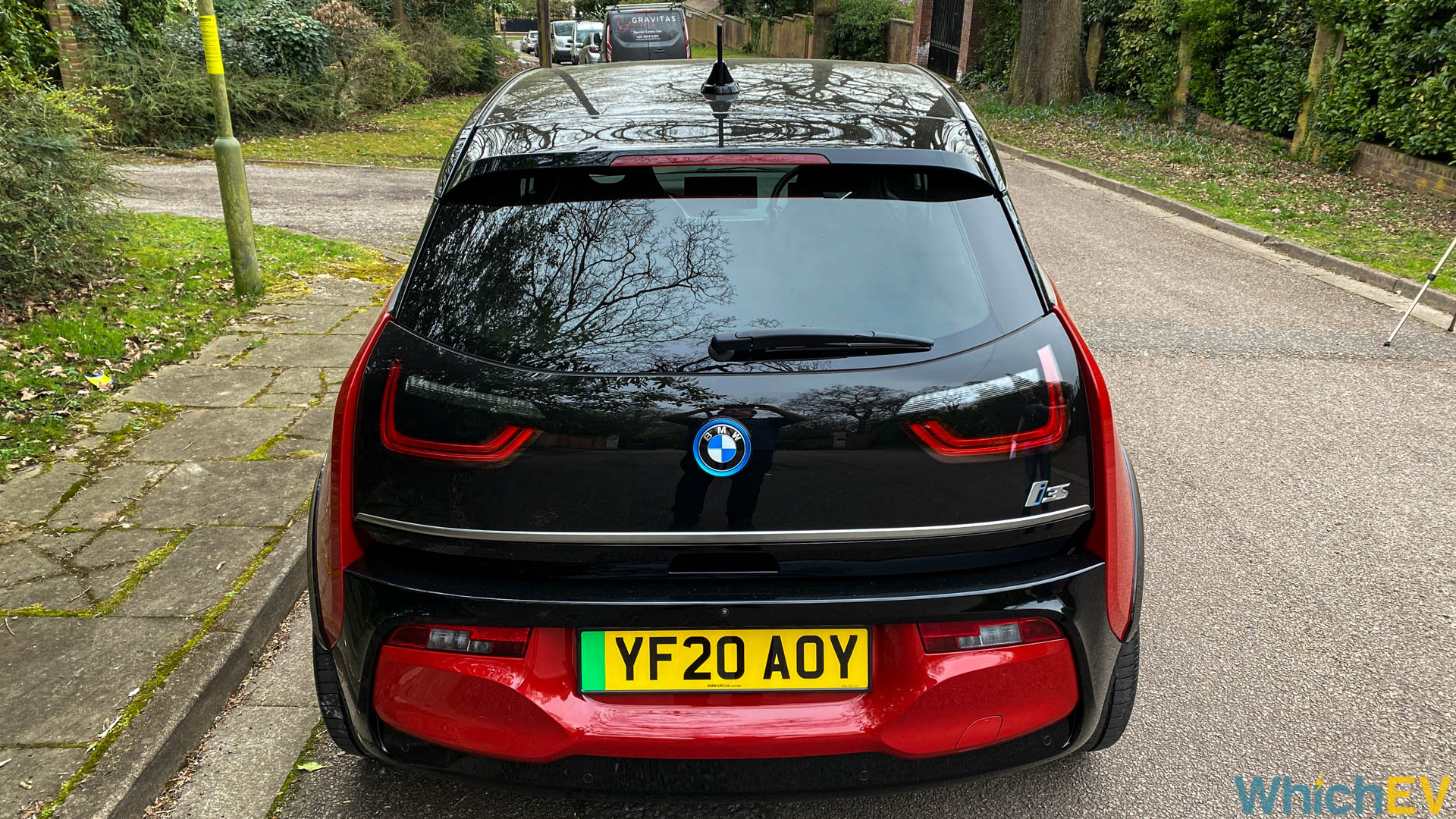
Despite the i3 supposedly being an eco-option, it is a car that virtually urges you to drive it quickly. The precise steering and responsive dynamics make it exceptionally fun. In fact, south in price of the Tesla Model 3, this is one of the most fun EVs. Only the Honda e offers a similar experience, thanks to also having rear-wheel-drive, but it's not as fast both in terms of acceleration and in ability to change direction with driver input.
The i3 suspension is a little hard, clearly aimed at driving experience more than comfort, but not so hard that bumpy UK city streets will make it a nightmare. In fact, for rapidly navigating an urban environment, few cars can beat the i3. However, while the i3 is also well poised at motorway speeds, this brings us to what remains the car's most significant drawback.
Range and Charging
The i3 may now have nearly twice the battery capacity of the original version, but it was always meant to be a city car rather than the do-it-all replacement for petrol and diesel. Even now, the basic i3 only has a 190-mile WLTP range and the i3s just 173 miles, both of which fall behind 50kWh Stellantis cars like the Peugeot e-2008 and Vauxhall Corsa-e, while dropping as much as 100 miles compared to Korean cars like the Kia e-Niro and Hyundai Kona Electric.
That is still going to be enough for a few daily commutes and plenty of local shopping trips or journeys to the gym, and this is still more range than the Honda e. AC charging is supported up to 11kW, which will take 3 hours 10 minutes to recharge the battery to 80%. A more usual 7kW wall box will take around four-and-three-quarter hours. However, another reason why you won't want to make long journeys in the i3 is that DC charging only goes up to 50kW, taking 42 minutes to reach 80%.
However, if you are public charging, a BMW ChargeNow subscription is £7.85 a month. This is basically a BMW rebranded subscription to bp pulse. You get a 5m AC cable, but the 8m option is £195 extra.
Running Costs
Despite its relatively low range, the i3 is quite an economical car to run in electricity terms. The basic i3 costs 3.1p per mile on a 14p per kW supply, and the i3s 3.4p. You also get three years of subscription to the Digital Charging Service, not to be confused with the DCS network. This helps you optimise your charging via an app.
The warranty is three years, but for unlimited miles. There is also an eight-year, 100,000-mile battery warranty, but with no capacity level specified. However, to keep this you will need to subscribe to the £15 a month servicing plan and follow the service interval properly. Insurance groups are reasonable for such a quick car, with the i3 in group 28 and the i3s in group 29.
Safety
The i3 does not come with a lot of contemporary safety augmentations as standard. Instead, you will need to purchase the £790 Driving Assistant Plus package to have these, including Adaptive LED headlights and adaptive cruise control with stop and go. There's Forward Collision Warning with City Collision Mitigation, and Preventative Pedestrian Protection. You also get Speed Limit Display and Traffic Jam Assist. It is a comprehensive bundle that is worth having, so it is a shame it is such an expensive optional extra.
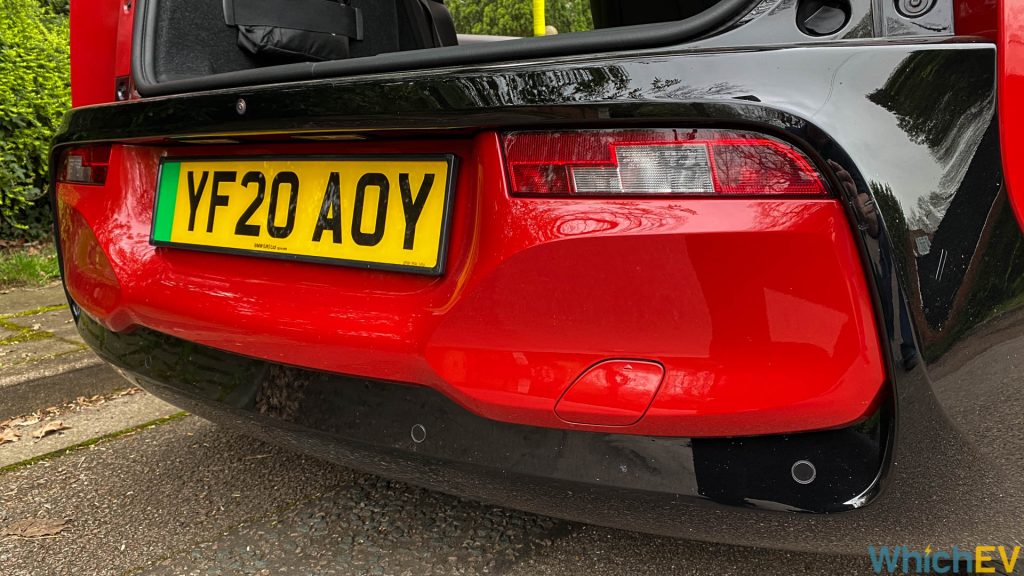

Yet another optional extra is the eDrive exterior sound to warn pedestrians, which costs £80. If you want automatic parking, front and rear sensors, and a reversing camera, that is another £790 for the Park Assist Package, although you can get the reversing camera on its own for £360. None of these packs appear to include either blind spot detection or lane departure warnings.
| Price: | i3 – £33,805; i3s – £34,805 |
| Range (WLTP): | i3 – 190 miles; i3s – 173 miles |
| Charge time (7.4kW): | 4 hours 45 minutes |
| Charge time (11kW): | 3 hours 10 minutes |
| Charge time (50kW, 80%): | 42 minutes |
| Battery: | 42.2kWh |
| On Board Charger: | 11kW |
| Cost per mile*: | i3 – 3.1p; i3s – 3.4p |
| 0-62mph: | i3 – 7.3 seconds; i3s – 6.9 seconds |
| Top Speed: | i3 – 93mph; i3s – 99mph |
| Power: | i3 – 170hp; i3s – 184hp |
| Wheels driven: | Rear |
| Cargo: | 260 litres; 1,100 litres with rear seats down; 12.5 litres (frunk) |
*based on electricity costs of 14p per kWh
1. Intro, Price, Options and Verdict
Source: https://www.whichev.net/2021/04/19/bmw-i3-2021-review/

0 Komentar